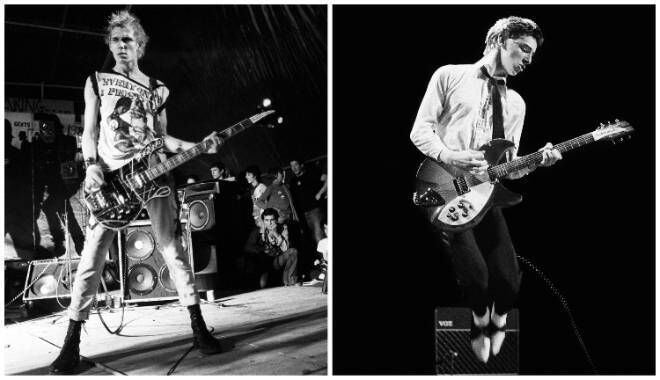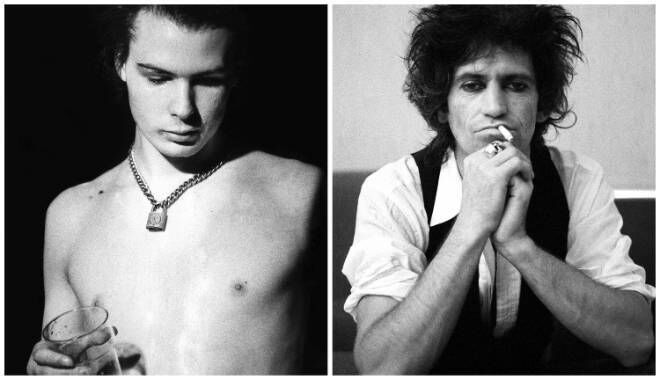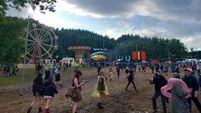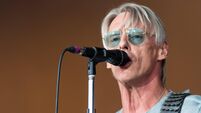Denis O’Regan: The rock photographer with Cork roots on Bowie and Queen tours

Denis O'Regan, photographer, and Freddie Mercury of Queen during one of the band's tours. (Picture copyright Denis O'Regan)
Watching David Bowie perform as Ziggy Stardust at the Hammersmith Odeon in July 1973, Denis O’Regan could never have imagined that he would one day work as his idol’s official photographer.
“I’d already seen Led Zeppelin and The Who and Elton John and everyone else who was around in the early 1970s,” says O’Regan. “But that concert was amazing. Bowie took everything to the next level, he was just beyond anything I’d ever witnessed. You know, it was mime, theatre, Japanese Kabuki… with rock music.”
The next night, at his second Hammersmith Odeon performance, Bowie stunned the audience by announcing his retirement. Grown adults are reported to have left the concert weeping. O’Regan was as relieved as everybody else when it transpired that Bowie was merely retiring his Ziggy Stardust persona. “Seeing Bowie perform was when I realised I wanted to become a rock photographer,” he says.

At that point, O’Regan was aged 19 and knew nothing about cameras or photography. His parents were an Irish couple, from Doneraile in Co Cork, who had eloped to England in 1952, settling in Barnes in south London because it was the only place they knew anybody.
When O’Regan finished school, he was offered a place in Ealing College of Art – the same institution where Freddie Mercury of Queen, Keith Richards of the Rolling Stones and Pete Townsend of The Who had studied – but his parents were determined that he should work in the City.
He began working as a trainee broker, but his love of music soon took precedence. After that Bowie concert, he bought a camera and taught himself to use it. “It was pretty basic,” he says. “There was just a body and a lens, and no gadgetry involved, so I learned fast.”
In those days, photographers working at rock concerts needed an official pass to get up the front, but O’Regan had no idea about how to go about getting one.
“I knew no one in the music business,” he says. “My big break came with punk. At punk gigs, you didn’t need a pass, you could do what you wanted. I mean, people were pogoing and spitting and throwing glasses, there was all that, but at least you could go up the front and photograph the band. It’s funny, I was learning to take pictures while the bands were two feet in front of me, learning to play.
“I photographed everyone. The Clash. Siouxsie and the Banshees. The Damned. The Ramones. Talking Heads. Those were the pictures the music papers wanted, and I’d get a little credit under them when they were published. And that’s what got me started.”
As it happened, the only punk band he never got to photograph were the very ones who kick-started the whole movement; the Sex Pistols. “I was supposed to photograph them at one concert, but they backed out and The Damned played instead. I did photograph Sid Vicious one time. That was at the last show he ever did in the UK, a concert he put on with his girlfriend Nancy Spungen and a few other musicians to raise the money to go to America. They both died not long after, in New York.”
Working the gig circuit, O’Regan became friends with another rock photographer, Chalkie Davies, and through him go to know his flatmate, Phil Lynott of Thin Lizzy.
“Chalkie used to tour with Thin Lizzy a lot, but he got fed up with it, he didn’t want to travel anymore. One day Phil mentioned they were off to tour Scandanavia, and I asked, can you take me along? And that was it, I went on tour with Thin Lizzy, and I thought, this is definitely what I want to do.”

O’Regan continued working his way up the ranks, eventually landing a job for a German magazine photographing the Rolling Stones on the first date of a European tour. “They said they’d let me do the first show,” he says,” but then that led to the next one and the next, and I stayed out on tour with them as their official photographer for the next eight weeks.”
O’Regan struck up a friendship with one of the Stones’ tour party, an accountant from New York. “The next year was 1983, and this guy had already become an entrepreneur; he was putting together David Bowie’s Serious Moonlight world tour, and he was the producer. So I rang him up and asked if I could be the photographer. He said I’d have to put a business plan together, something that he could bring to David as a proposal.
"So I did that, I proposed to photograph the tour and make a book of it. We’d take out the costs and split the profits. And that’s what we did. Ricochet was the first book David ever sanctioned, and he was very taken with it. I thought I’d be kept at arm’s length, but in fact I was more henpecked than anything. It was all, where’s Denis? Right. Do this, do that.”
That project turned out to the start of an enduring relationship with Bowie, who he eventually photographed at more than 200 concerts. “I’ve got at least 10,000 photos of Bowie in my own collection, and there must be at least than many in the Bowie archive. One of my favourites is a picture of David Bowie sitting on his bed.
"That came about when Helmut Newton was hired by Vanity Fair magazine to produce a series of photographs of celebrities in their bedrooms. David agreed to Newton shooting him as I long as I could photograph him too. So there’s that shot of David on his bed, but I also have shots of Newton photographing him. That was fantastic.”
Rock tours were often notorious for the debauched behaviour engaged in by the acts and their crews, but O’Regan insists he mostly missed out on the wild years. “The 1970s were outrageous in the music business,” he says. “In those days, the tours were just promotional tours for the albums, it was the album sales that made money.
"But then, by the 1980s, the tours had begun making money too. As with Bowie, you had accountants and lawyers running the show, and the musicians gave up their druggie ways. Most of them anyway. Though I do remember this photograph I took on a Duran Duran tour, when someone had made a whole face – ears, nose, mouth, eyes, everything - out of a heap of cocaine on a table.”

He remembers Queen as being the wildest band he worked with. “They were the worst by a long, long way. On any tour, it’s the road crew who do the hardest work, putting everything up and taking it down again. When I was on tour with the Stones, they threw a party for their crew at a club in Frankfurt. And I thought, wow, this is a popular place, there’s all these cool girls here. But it turned out they’d all been paid to be there.
“But then, when Queen threw a party for their crew, they cut out the middleman and had a party in a brothel. That was in Germany as well. Those things all seemed to happen in Germany.”
In general, however, the atmosphere was very different by the 1980s. “Everything was more professional by then,” he says. “That suited me fine, because I didn’t want to get into that stuff anyway. If I was out there taking loads of drugs, I would never have made it through the decade.”
O’Regan admits he has found it difficult to settle down after his life on the road. “One of the reasons I loved touring was meeting all these wonderful ladies all over the world,” he says. “I purposely kept myself unattached in those years. I didn’t get married until I finished touring. I was 44. But I made a hash of that as well. I’ve been divorced twice in the past ten years, in fact.”
These days, he lives quietly in London. He has opened a gallery, on King St in Hammersmith, and organises exhibitions of his work there and at other venues. “My archive is huge,” he says. “My next book will be the tour I did with Bowie in 1987, and I want to do books on the rest of them as well; the punk movement, the Stones, Queen, Duran Duran. I’ve started writing my memoirs too. The thing about that is, I was so busy touring for so long that everything’s become a bit of a blur. I know what happened, but I have to go online to find out when.”
- Denis O’Regan’s works are available to buy and view at https://www.west-contemporary-editions.com




